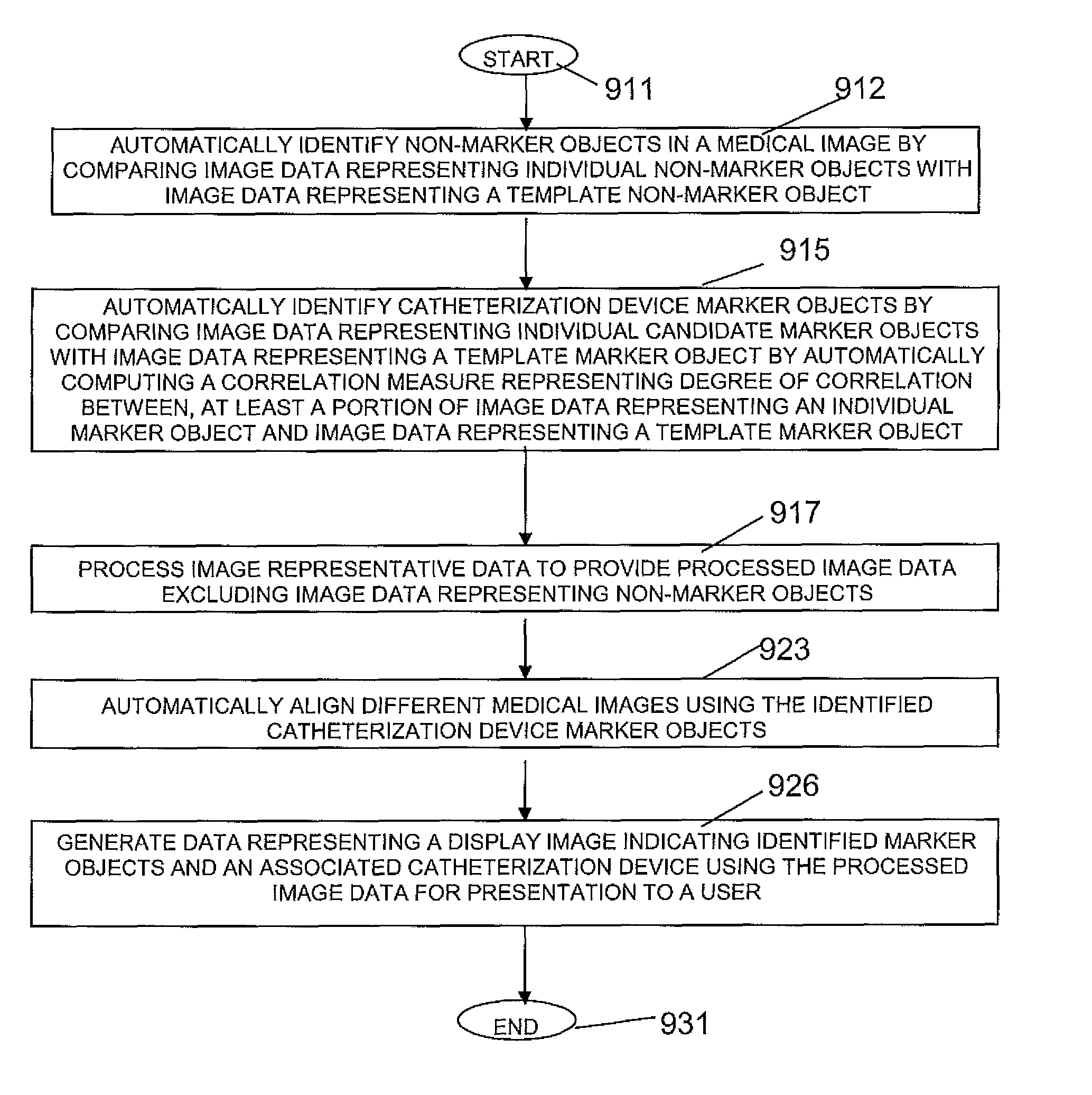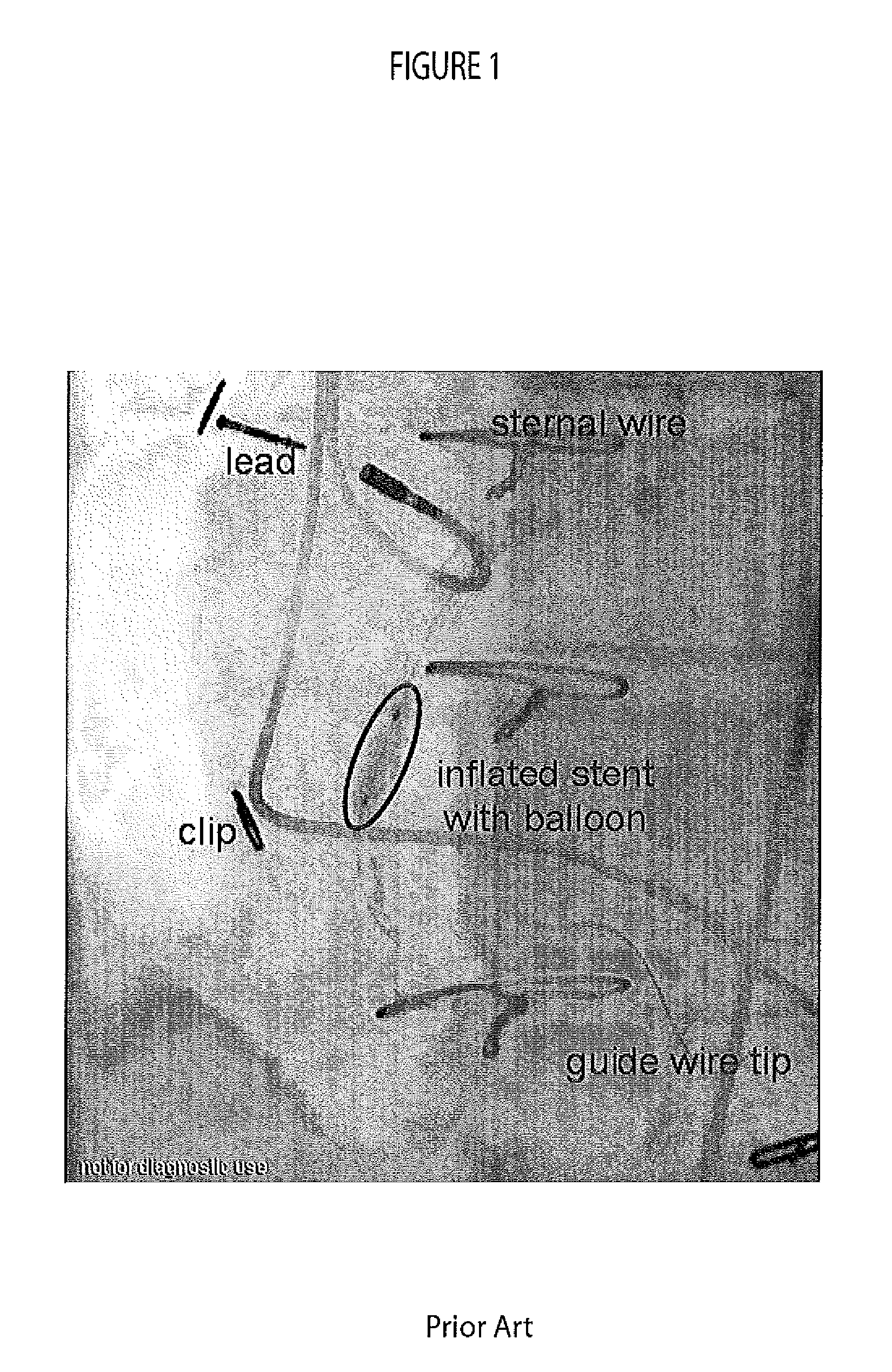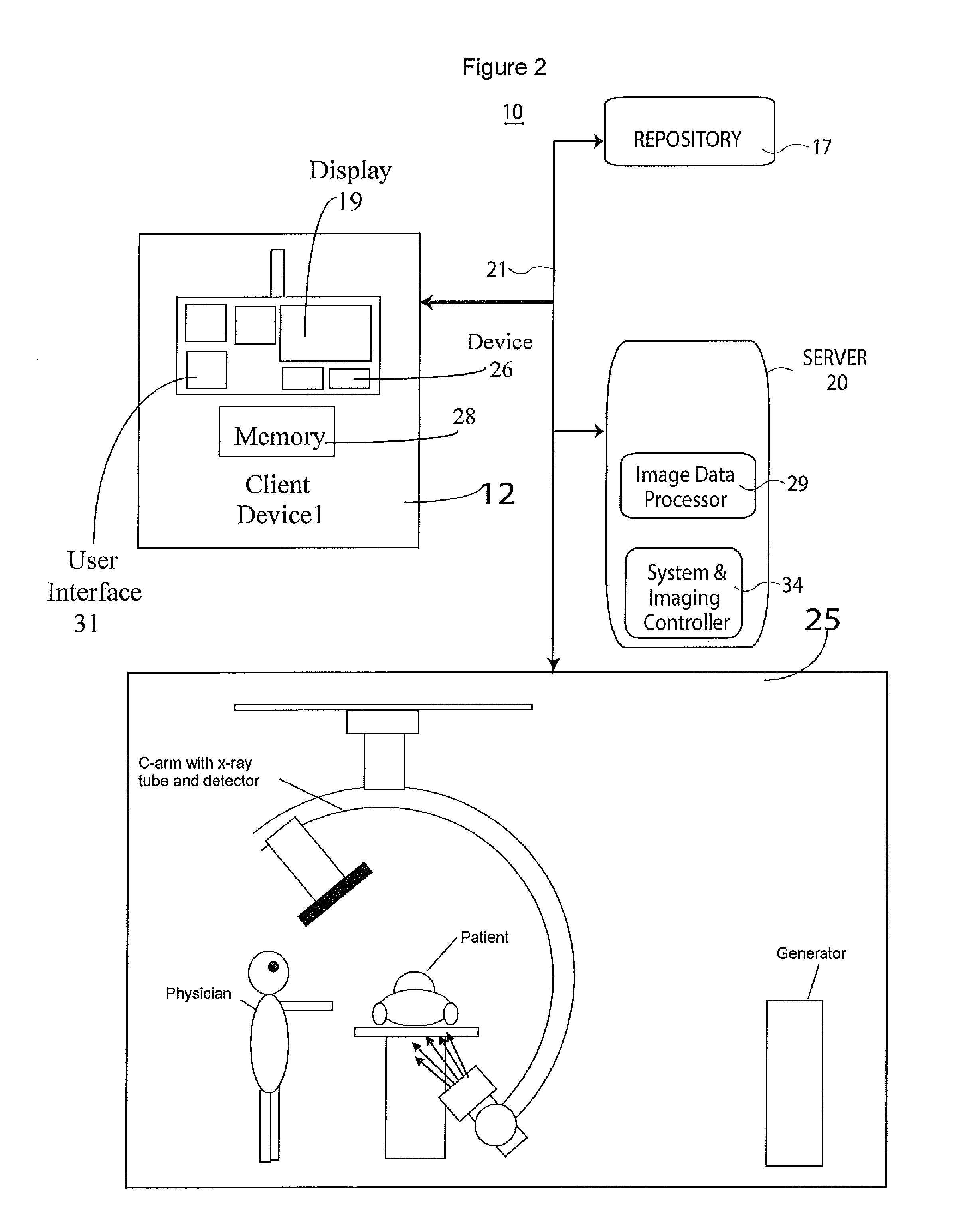System for detecting catheterization devices
a technology of automatic identification and image data, applied in image analysis, image enhancement, instruments, etc., can solve the problems of false detection of marker spheres, unable to reliably detect balloon marker spheres, and the quality of images provided by known systems for identifying the stent location is typically limited
- Summary
- Abstract
- Description
- Claims
- Application Information
AI Technical Summary
Benefits of technology
Problems solved by technology
Method used
Image
Examples
Embodiment Construction
[0015]A system automatically detects balloon markers in an angiogram image that also contains other high contrast objects by detecting and labelling unwanted high contrast objects and by employing a marker object search. The system improves image quality using multiple images that are registered (aligned) based on the location of balloon marker spheres and averaged, for example. The system advantageously substantially increases CNR (Contrast to Noise Ratio) and enhances visibility of stent struts and the boundaries of a stent. A stent as used herein comprises an object such as a medical instrument or device that is used invasively within patient anatomy such as for a PTCA (Percutaneous Transluminal Coronary Angioplasty) procedure, for example. A marker sphere as used herein comprises a sphere or another radio-opaque object used to mark position or boundaries of a stent or invasive instrument.
[0016]FIG. 2 shows medical image data processing system 10 for automatically identifying a c...
PUM
 Login to View More
Login to View More Abstract
Description
Claims
Application Information
 Login to View More
Login to View More - R&D
- Intellectual Property
- Life Sciences
- Materials
- Tech Scout
- Unparalleled Data Quality
- Higher Quality Content
- 60% Fewer Hallucinations
Browse by: Latest US Patents, China's latest patents, Technical Efficacy Thesaurus, Application Domain, Technology Topic, Popular Technical Reports.
© 2025 PatSnap. All rights reserved.Legal|Privacy policy|Modern Slavery Act Transparency Statement|Sitemap|About US| Contact US: help@patsnap.com



